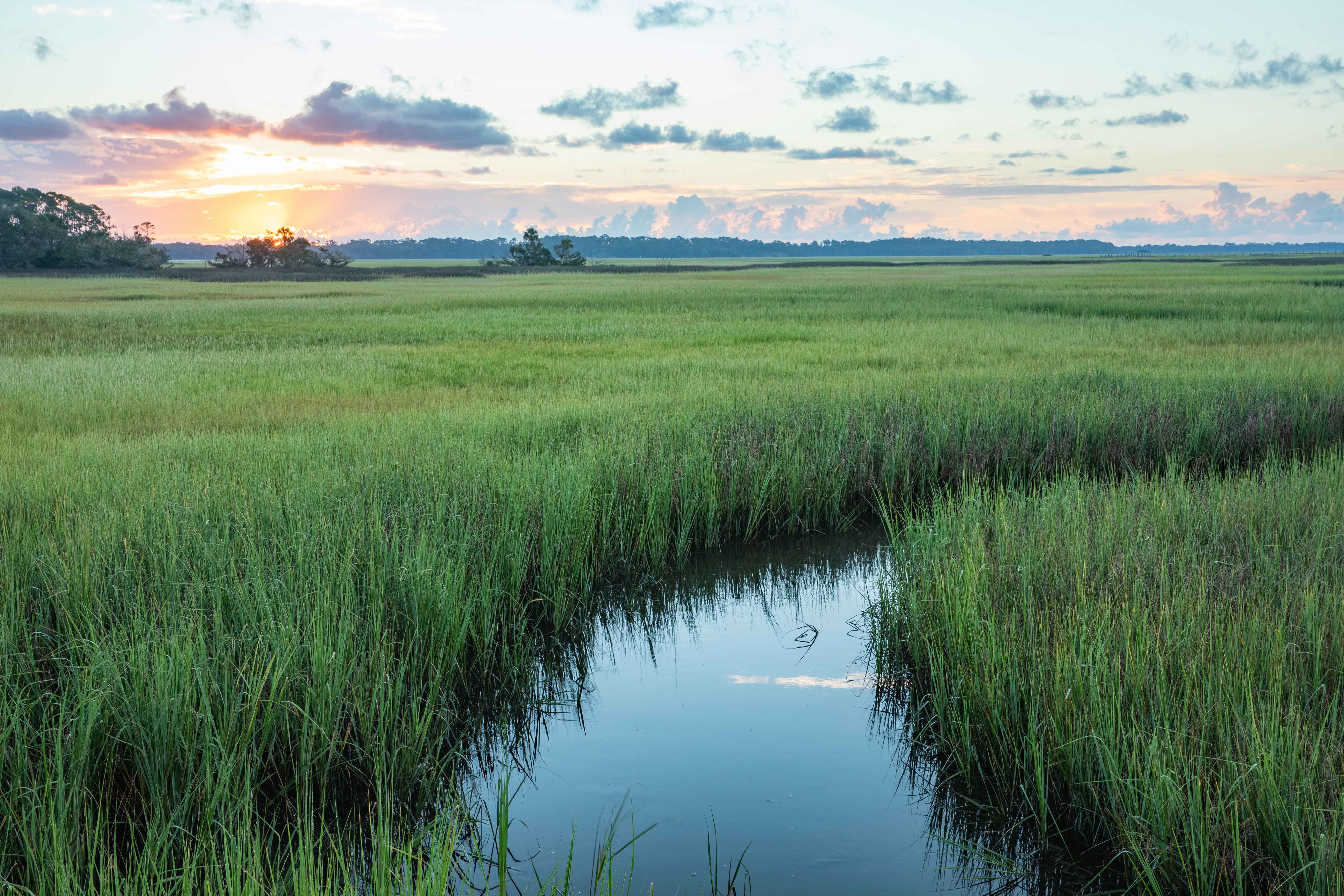Taking Measure
Just a Standard Blog
In a Changing Climate, Resilience Research Can Help Communities ‘Make Decisions for a Better Future’
A conversation with NIST economist and U.S. delegate to the IPCC, Jennifer Helgeson

Climate change keeps NIST economist Jennifer Helgeson up at night. Not with worry, but with work. For the last several weeks, Helgeson was working on the latest report from the Intergovernmental Panel on Climate Change (IPCC), the United Nations body that publishes scientific assessments of climate change. As part of the U.S. delegation to the IPCC, she supported State Department representatives as they negotiated the final wording of the report’s “Summary for Policymakers” with their counterparts from around the world. Unable to attend the negotiations in person due to COVID travel restrictions, Helgeson dialed in from her home in Maryland. Her workday started at 4 a.m. local time.
The IPCC report, which was published last week, highlights the fact that climate change is already impacting ecosystems and people around the world. If warming continues, the risks will increase. But even now, many impacts are unavoidable. People will have to adapt.
Helgeson, a behavioral economist, is the associate program manager for NIST’s Community Resilience Program, which helps people and communities adapt to climate change and prepare for the types of events, including hurricanes, floods and wildfires, that are becoming more frequent and deadly as the climate heats up. In this interview, Helgeson describes how communities can make themselves more resilient in the face of these threats. This interview has been edited and condensed.
You helped the State Department representatives negotiate the language in the summary of the report. What did that involve?

My role was to help the U.S. delegation ensure that the text of the summary accurately reflected the underlying science. The IPCC report is a science document, not a policy document, and it doesn’t prescribe any specific policies. Still, the summary has to be very plain language and helpful for policymakers. The delegates from the U.S. and other countries go through the summary line by line. There’s a lot of back and forth, a lot of live editing, working through the weekend. Normally all of this happens in person, and I like to travel, so it was a little disappointing not to be there. But it was still exciting and an honor to be included.
What does it mean for a community to be resilient?
Being resilient means having the capacity to absorb a shock, like a hurricane or flood, and then return to the previous level of function, or ideally, beyond it. People used to think about community resilience mostly in terms of extreme but low probability events, like major storms. In the last couple of years, we’ve been pushing to think more about how those impacts look on top of preexisting conditions — something like a natural disaster occurring in a historically underserved area during a pandemic. That’s a more complicated way of looking at the world, but it’s also more realistic. More than one thing can go wrong at a time, and it’s important to plan for that possibility.
Can you give an example of how a community can make itself more resilient to climate change?
Cedar Rapids, Iowa, is a good example of a community that made itself more resilient by changing its built environment. In 2008, heavy rainfall forced the Cedar River to overflow. That river runs right through downtown, and there was a devastating flood. Fortunately, there was no loss of life, but there were billions of dollars in damages. After that, the city implemented a voluntary buyout program for property owners in the flood zone. A lot of homeowners and small businesses participated in that program and relocated to safer ground. Now, Cedar Rapids is much more resilient because fewer homes and small businesses are at risk. And the city turned much of the flood-prone area into a green space with an amphitheater, so people get utility out of it on a day-to-day basis. This is a good example of a climate adaptation that can bring a lot of co-benefits to a community.

What do you mean by co-benefits?
A lot of adaptations to climate change provide other benefits at the same time. You might invest in a more robust electric grid so the lights don’t go out during a heat wave or major storm, and as a side benefit, those investments create good local jobs. You might preserve saltwater marshes to protect against storm surges, and that protects biodiversity at the same time. This is a consistent theme running through the IPCC report, that adapting to climate change can pay off in multiple ways.
NIST is a measurement institution. Why are we involved in community resilience?
We are working on better ways to measure resilience, which is a really hard thing to do. Let’s say a community implements a resilience project. You can’t just wait around for 20 years for a hurricane to hit and then evaluate how resilient the community was. Hopefully, that hurricane never hits. So, you need other ways to measure the benefits. We’re developing new economic methods to do that, and these incorporate co-benefits into the equation. And that’s important because we should all want to adapt and be idealistic and make things better for humanity. But the fact is, these investments also need to make business sense. How much bang can you get for your adaptation buck? We’re developing tools to help answer that question.
The IPCC report highlights the fact that a lot depends on the choices that humanity makes in the coming years. Are you optimistic, or not, that people will make the decisions necessary to avoid the worst effects of climate change?
Climate change is already affecting people in very tangible ways, but it operates over long time horizons, and the worst effects are still in the future. Yet people tend to be concerned with issues that affect them today. Think about how we respond to natural disasters. We spend a lot of money on recovery after an event, but relatively little on planning before an event. People get interested when their house is flooded, but they pay a lot less attention to the risk that their house might be flooded in the future. It’s just human nature. But we’re working on tools that — I’m not sure if they work with human nature or despite it — but they help people make decisions for a better future. I am optimistic about that.





Many forms of resilience protect buildings and infrastructure from floods, hurricanes, etc. Others protect people from factors that do not destroy or damage buildings and infrastructure. Heat waves are a good example. If "build back better" helps buildings resist damage, so they will last longer, what will it take to also incorporate design (in particular, passive methods) that considers things like heat waves, so that these longer lasting structures don't turn into ovens when the power goes off?